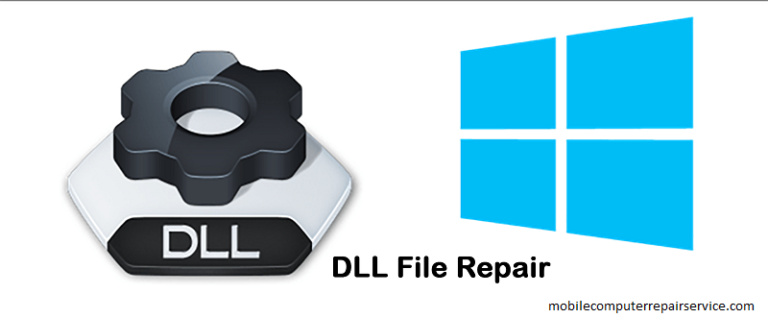
DLL stands for Dynamic Link Libraries which are originally some external parts of different applications tasked with the storage of important and critical codes. These files are typically loaded into computer memory. When computer programs need the content of those files, the system utilizes them. The files may be corrupt or missing, and that’s when you have annoyance or poor user experience from applications.
DLL files end with the “.dll” extension. Repairing the files is possible but you need to get the right know-how for successful DLL Files Repair Los Angeles. In this article, you’ll learn the common techniques along with some useful tips to prevent or fix such a problem.
DLL errors show up for several reasons. The code of a DLL file becomes inaccessible or unreadable when that file gets corrupt or missing. Once that happens; you’ll come across a message that says ‘DLL file is missing’. The message is pretty much annoying for anyone.
These errors appear in all Windows operating systems including Windows 7, 8, 10, Vista, and XP. DLL errors can be very troublesome since the varieties of these files are so diverse that there’re many things that may go wrong.
The troubleshooting techniques for fixing DLLs are not very specific or detail-oriented, but they may be useful in some cases depending on the dependency of an application on its DLL files.
10 Tips to Perform DLL Files Repair Los Angeles Correctly
#1 Restart the computer. Sometimes, a temporary issue may occur, and it can be fixed by a computer restart. So, there’s little to worry about a DLL error that is not very permanent.
Remember that this technique is optional. It’s applicable if the error doesn’t stop the computer before the complete initialization of Windows. In case you’re having a DLL problem that’s more serious, you may have to restart the computer forcefully.
#2 Go to the Recycle Bin and restore the DLLs which have been deleted. Users may delete one or more of these files accidentally and purposefully. The majority of DLL errors become known in two particular forms such as “Missing DLL” or “DLL Not Found”. The likeliest cause of most DLL errors is the users’ lack of consciousness or awareness while interacting with the files.
Enter “Safe Mode” for executing this or one or more of the steps below when you cannot access Windows normally just because of the DLL error.
You can also rely on a free recovery program that helps recover deleted DLLs. On most occasions, such a program proves useful for those who think the DLL files have been accidentally deleted and cleared the Recycle Bin after that.
The idea of using a file recovery program isn’t bad. Rather, it’s a great way to follow if you’re sure you deleted the DLL yourself, and it used to function properly before the deletion process.
#3 Use a Malware or Virus removal program. Run a deep scan of the system. You may not know, but your computer can be the good host of particular programs which behave with some DLLs in a hostile manner and end up masquerading as DLLs.
#4 Use the “System Restore” function. By using the built-in feature, you can undo some of the recent changes in the system. If there’s suspicion that some changes are responsible for the DLL errors, System Restore can be useful. If you suspect that someone other than you changed the system configuration or the registry, the function can be useful too.
#5 Reinstall the particular program that depends on the DLL showed as missing or error. If you see a DLL error only when an application/program is opened or used, there’s a simple solution. Just reinstall that program; so, it gets installed properly and registers the required DLL file once again.
#6 Update the drivers for the hardware part associated with the DLL error that occurred. For instance, you should update the relevant driver if a “Missing DLL” message comes up only when you’re using the printer. Remember hardware components require specific drivers for their standard operations.
#7 Use the “sfc/scannow” command. It’s a built-in feature that can be used to find and replace an incorrect or missing DLL associated with the operating system (OS). The command is technically known as the System File Checker that takes care of damaged/missing DLLs that came with the OS.
#8 Update Windows. Check for any available update of the operating system. The different service packs and patches are designed to update or replace some DLLs distributed with the OS. There’re hundreds of DLL files associated with the OS of your computer.
#9 Repair the operating system (Windows). As long as the DLLs are in questions, you can never tell for sure if the above techniques will be good enough. Chances are that the above troubleshooting tips may fail. Under these circumstances, you can initiate a repair installation of Windows. This action may restore all of your DLL files to the original and functional version.
#10 Do a clean installation of the OS. When none of the above seems to bring you the relief of not seeing any ‘DLL Missing’ error, a rigorous yet effective way is to perform a clean OS installation. Once you’ve had a clean installation of Windows, the hard drive will be erased and a fresh copy of an operating system will be installed. However, you should try the #9 way first because that’s the more comfortable option.
If you’ve done a clean installation and the problem still exists, you need not worry about the DLL errors of the software. It’s then attributive to only the hardware components. This is how to handle DLL Files Repair Los Angeles. If you need expert’s suggestions or professional assistance for the particular trouble, call us anytime for an affordable solution.
